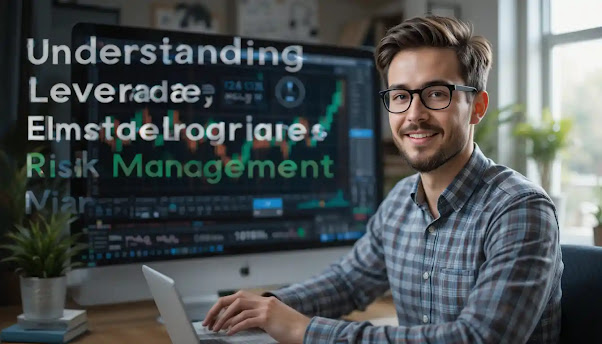Forex trading presents opportunities for substantial profits, but it also carries significant risks—especially when leverage and margin come into play. While these tools can amplify gains, they can just as easily magnify losses if not used correctly. Understanding how leverage and margin work, and implementing proper risk management techniques, is critical for long-term success in the forex market. This comprehensive guide explores the fundamentals of leverage, margin requirements, risk control, and best practices for managing your trading capital in 2025.
What is Leverage in Forex?
Leverage allows traders to control a large position with a relatively small amount of capital. For example, a leverage ratio of 100:1 means you can trade $100,000 worth of currency with just $1,000 of your own money. While this can multiply your profits, it also increases the risk of significant losses. In 2025, most brokers offer adjustable leverage to help traders manage their risk exposure more effectively.
How Margin Works
Margin is the amount of money a trader needs to open and maintain a leveraged position. It’s essentially a deposit held by the broker to cover potential losses. For example, a 1% margin requirement means you need $1,000 to open a $100,000 trade. If the trade moves against you, your broker may issue a margin call or close your position to prevent further losses.
Types of Margin
There are several types of margin you need to understand:
- **Initial Margin**: Required to open a new position.
- **Maintenance Margin**: The minimum balance needed to keep the trade open.
- **Margin Call**: A warning from the broker when your account balance falls below the maintenance margin.
- **Stop-Out Level**: The level at which the broker will automatically close positions to prevent a negative balance.
The Risks of High Leverage
While high leverage can lead to large profits, it also increases the potential for catastrophic losses. Traders must be aware of how quickly a trade can turn against them, especially in volatile markets. It’s recommended to use conservative leverage, such as 10:1 or lower, particularly for beginners.
How to Calculate Margin and Leverage
To calculate required margin, use the formula:
`Required Margin = (Trade Size / Leverage)`
For example, if you want to trade one standard lot ($100,000) with 100:1 leverage, the required margin is $1,000.
To calculate leverage:
`Leverage = Trade Size / Account Equity`
Always monitor your margin level, which is `(Equity / Used Margin) * 100`.
What is Risk Management?
Risk management involves identifying, assessing, and controlling potential losses in your trading. It’s the most crucial skill every trader must master. A well-defined risk management plan helps you stay in the game longer and avoid blowing your account.
Key Risk Management Techniques
- **Use Stop-Loss Orders**: Always set a stop-loss to limit your downside.
- **Risk Only a Small Percentage Per Trade**: Typically, 1–2% of your capital per trade.
- **Diversify Your Trades**: Don’t put all your money in one pair or trade.
- **Maintain a Positive Risk-to-Reward Ratio**: Aim for trades that offer at least 2:1 or better.
Position Sizing
Determining the correct position size is crucial to managing risk. Use the following formula:
`Position Size = (Account Equity * Risk %) / Stop Loss in Pips * Pip Value`
This ensures that you don’t overexpose your account to a single trade.
Common Mistakes in Using Leverage and Margin
Some common pitfalls include:
- Over-leveraging small accounts
- Ignoring margin calls
- Trading without stop-losses
- Holding onto losing positions hoping they’ll recover
Avoiding these mistakes can greatly improve your trading survival rate.
Conclusion
Leverage and margin are powerful tools in forex trading, but they must be handled with care. Combined with a strong risk management plan, they can be used to build wealth sustainably. Understanding how to calculate and control risk, use proper position sizing, and manage emotions will set you apart from the majority of traders who fail due to poor risk control. Trade smart, stay informed, and never risk more than you can afford to lose.

